Finding the perfect pair of sandals is a delightful experience, but sometimes, even the most well-fitting sandals can feel a bit too wide, causing discomfort and an insecure fit. Fortunately, there are several simple and effective methods to fix sandals that are too wide.
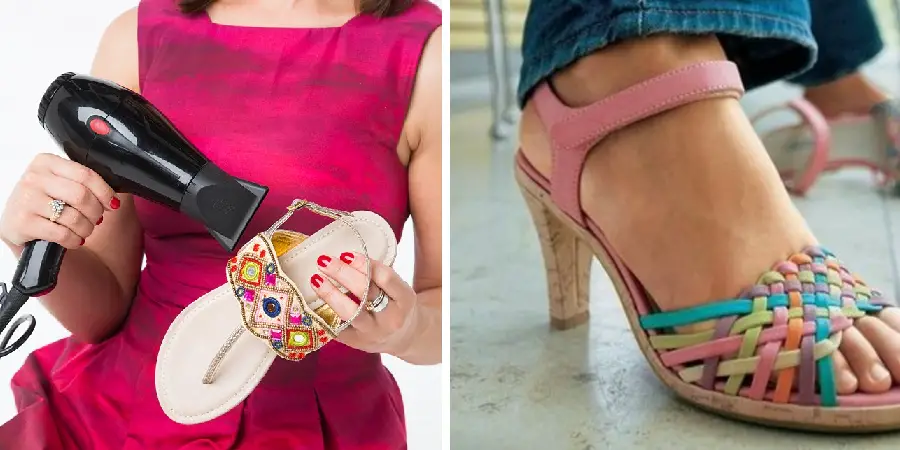
In this article, we will explore practical solutions that will allow you to adjust your sandals and regain a snug fit, providing both comfort and confidence with every step of how to fix sandals that are too wide. Whether your sandals have adjustable straps, are made of leather or fabric, or feature buckles or Velcro closures, we have got you covered.
By following these tried-and-tested techniques, you can easily customize the width of your sandals to match the unique contours of your feet, ensuring a secure and comfortable fit that will make you fall in love with your favorite footwear all over again.
Common Issue of Sandals Being Too Wide
Sandals that are too wide can be a common issue, especially if you have particularly narrow feet. When sandals are too wide for your foot, they may cause discomfort or pain in the heel area due to a lack of support and stability.
This can also lead to blisters from rubbing and chafing as you walk. Additionally, having sandals that are too wide can make them harder to keep on your feet while walking, potentially leading to tripping and falls.
Fortunately, there are several solutions available to help fix sandals that are too wide and provide a better fit for your feet. Whether it’s using foam inserts or adjusting the straps of your sandal, these methods will ensure that you get a better fit and more comfortable experience. With the right adjustments, you should be able to make your sandals fit perfectly!
By following these steps, you can get the most out of your sandals and enjoy a comfortable fit that lasts for years. Read on to learn how to fix sandals that are too wide and provide relief from discomfort or pain in the heel area.
Importance of Proper Fit for Comfort and Stability
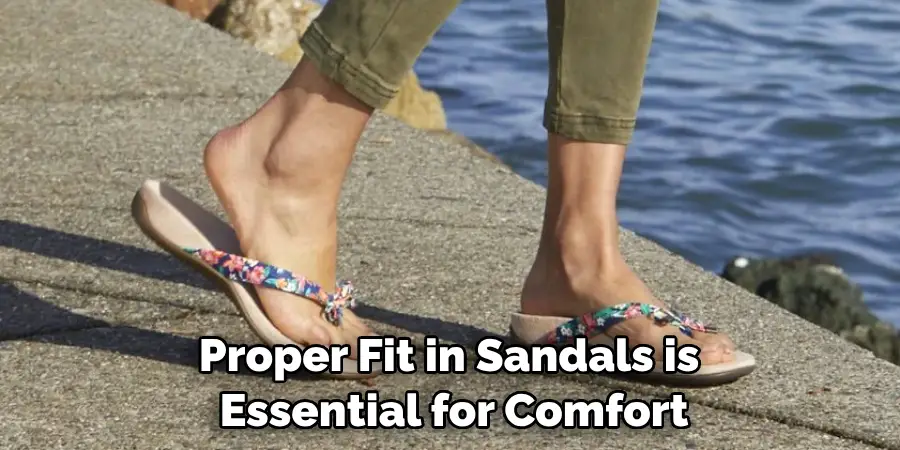
Proper fit in sandals is essential for comfort and stability. Wearing sandals that are too wide can cause blisters, chafing, and even foot pain due to the lack of support. In addition, having sandals that don’t fit securely can also cause tripping and slipping hazards when walking or running.
To prevent these risks, it is important to understand how to fix sandals that are too wide and make sure they fit properly. There are several different methods that can be used depending on the type of material a person’s sandals are made of.
For leather or suede sandals, additional padding can provide a tighter fit and more support. This can be done by adding a thin layer of foam or fabric to the inside of the sandal, where it would come in direct contact with the foot. The padding should be designed to fill any gaps between the person’s feet and the shoe so that no movement is possible when walking. It’s also important to make sure that the added material isn’t too thick or uncomfortable.
For sandals made from synthetic materials, using heat is often an effective method for tightening them up. Heat shrink tubing can provide a snug fit around the foot while still allowing some flexibility for comfort. To apply this, simply put on the sandal and place a piece of heat shrink tubing directly over any areas where there are gaps. Then use a hairdryer or heat gun to activate the tubing and let it cool and harden around your foot.
10 Methods How to Fix Sandals That Are Too Wide
Method 1: Using Inserts or Cushions
By placing inserts or cushions inside your sandals, you can effectively reduce the width. Gel or foam inserts can be strategically placed to fill the empty spaces and provide a snugger fit. These inserts are available in various shapes and sizes to accommodate different foot widths.

Some inserts even come with a heel cup to maintain your foot’s position within the sandal. To ensure that the insert is positioned properly, it is best to put the insert on before putting on your sandal.
Method 2: Using Insoles or Orthotics
Insoles or orthotic inserts can help adjust the width of your sandals while providing additional support and cushioning. These inserts are available in different thicknesses and materials, allowing you to choose the one that suits your needs best. Insoles can be custom-made to fit your feet and provide the right amount of support and cushioning, as well as make your sandals fit better.
To use insoles in your sandals, simply remove the original insole and replace it with the new one. Make sure that the insole fits snugly and is comfortable. If you’re using orthotic inserts, make sure to follow the instructions provided by your healthcare provider.
Method 3: Adjusting Straps or Buckles
If your sandals have adjustable straps or buckles, you can easily customize the fit. Tighten the straps or move the buckles to a tighter hole to reduce the width. Experiment with different adjustments until you achieve the desired snugness. If you find that the straps or buckles are too loose even when adjusted all the way, add another hole to them.
Method 4: Adding Extra Holes
For sandals with strap closures, you can create additional holes using a leather punch or a sharp object. This method allows you to tighten the straps further, reducing the width to fit your feet perfectly. Some sandals may already have extra holes that you can use if they are large enough.
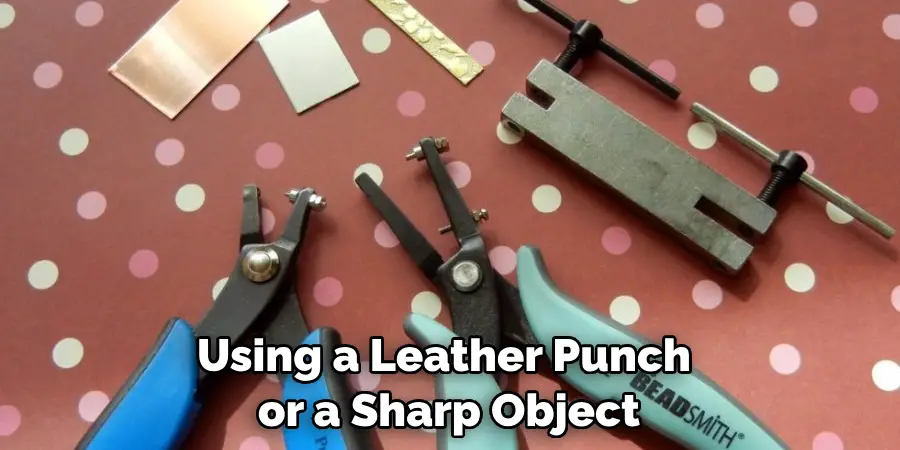
If the sandal strap is leather, use a leather punch, which is specifically designed to make clean holes in straps. You can buy a leather punch at a craft supply store or online. Place the leather punch over the desired location and press down firmly. This will create a clean hole with no jagged edges that can cut into your feet.
Method 5: Sewing Elastic Bands
If your sandals have fabric or leather straps, sewing elastic bands onto the inside of the straps can provide a more secure and snug fit. Measure and sew the elastic bands in a way that gathers the excess material, effectively reducing the width of the straps.
Make sure to leave a small gap at the end of the straps for comfort and adjustability. Once you have sewn on the elastic bands, try on the sandals to check for a better fit. If necessary, add more elastic bands until the straps feel secure and snug.
Method 6: Using Moleskin or Adhesive Padding
Moleskin or adhesive padding can be applied to the inner side of the sandals’ straps or footbed to create friction and prevent slipping. This additional grip can help compensate for the excess width and provide a more secure and comfortable fit.
To use moleskin or adhesive padding, simply cut and shape the material to fit the inside of the sandal straps or footbed. Be sure to test the fit of your sandals after each application of moleskin or adhesive padding, as too much can cause discomfort.
Method 7: Heat Shrinking
For sandals made of certain materials like synthetic or rubber, heat shrinking can be a viable option. Gently heat the sandals with a hairdryer or heat gun, then wear them while they cool down. The heat will cause the material to contract slightly, reducing the overall width.
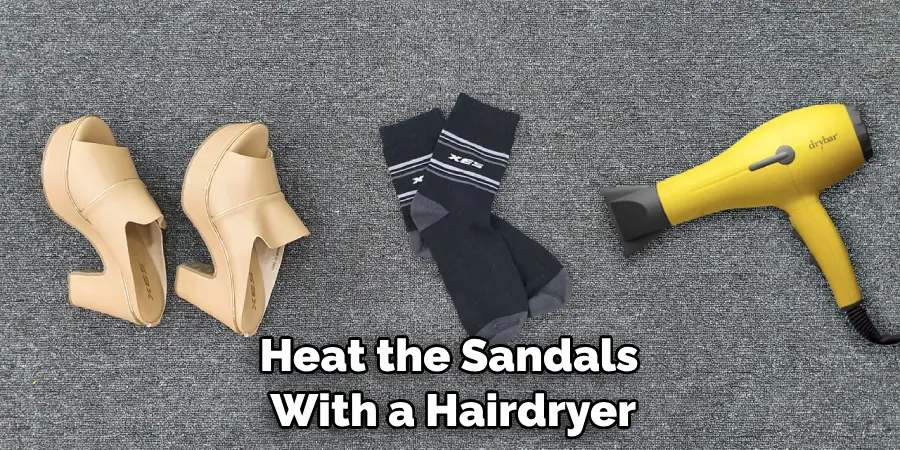
Method 8: Wetting and Drying
This method works well for sandals made of leather or natural fibers. Wet the sandals thoroughly and wear them until they dry. The moisture will allow the material to stretch slightly, conforming to the shape of your feet and reducing the width in the process.
Method 9: Layering Socks or Stockings
If your sandals are only slightly too wide, wearing thicker socks or layering multiple pairs of socks can help fill the extra space. This temporary solution provides a snugger fit, but it may not be ideal for warmer weather or certain styles of sandals.
Method 10: Seeking Professional Help
If none of the DIY methods yield satisfactory results, consider consulting a professional cobbler or shoe repair specialist. They have the expertise to make precise adjustments to your sandals, ensuring a perfect fit that aligns with your foot shape and width.
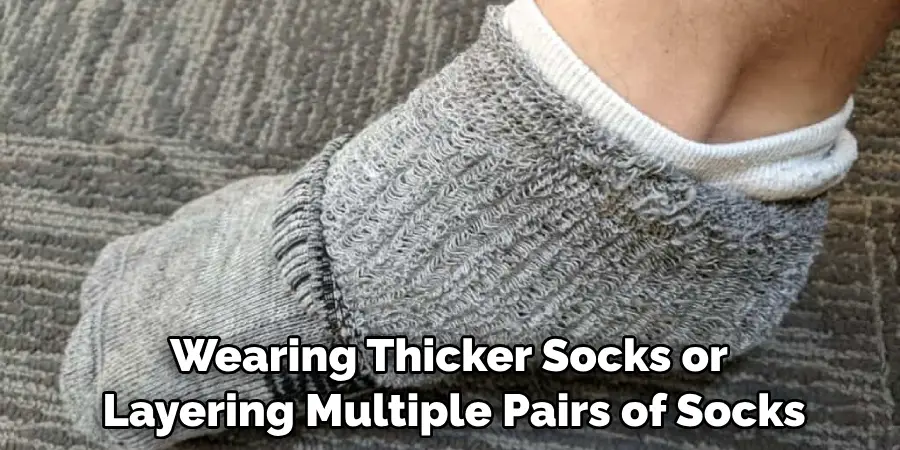
Conclusion
With these easy steps, you can have sandals that fit your feet perfectly in no time. Learning how to fix sandals that are too wide is not as daunting as it may seem. Not only does this allow you to save money by not having to buy a new pair of shoes, but it also helps you be more creative when adjusting the straps on your sandals.
Try out the suggested methods and pick the one that works best for you so that you can make sure that your sandals fit comfortably and stay securely on your feet throughout wear. So remember, the next time your favorite flip-flops start feeling a bit lost, don’t throw them away… salvage them instead!

